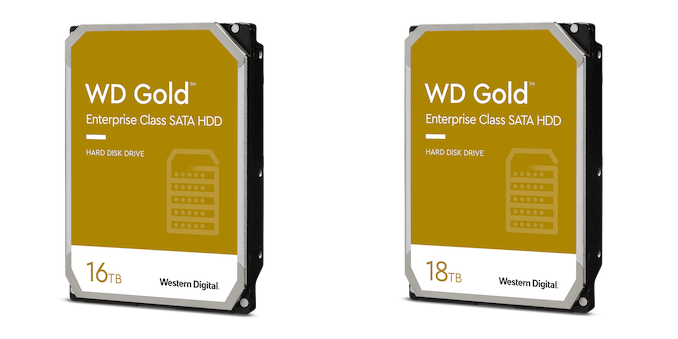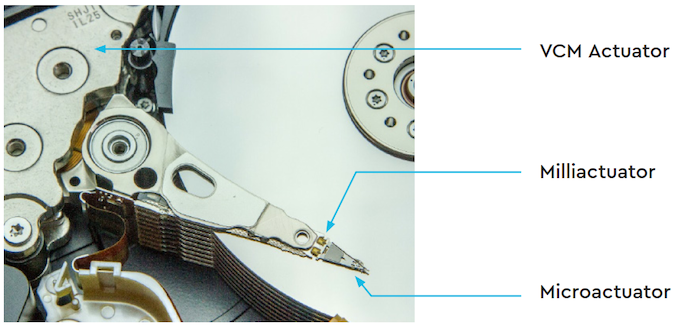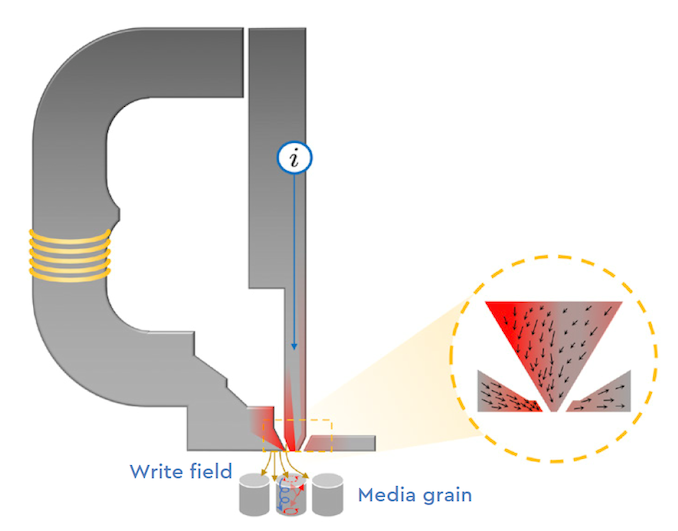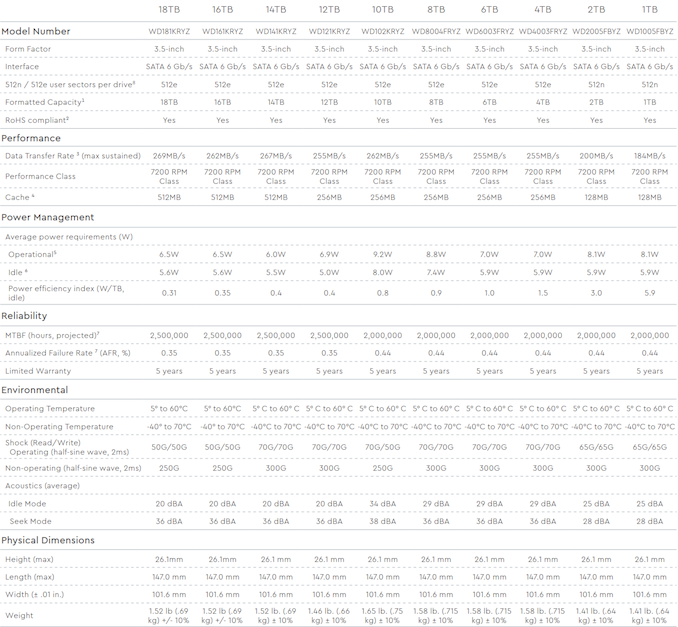Western Digital's 16TB and 18TB Gold Drives: EAMR HDDs Enter the Retail Channel
by Ganesh T S on July 9, 2020 8:00 AM EST- Posted in
- Storage
- HDDs
- NAS
- Western Digital
- MAMR
- Helium HDD
- HAMR
- CMR
- EAMR

Western Digital made a number of announcements yesterday related to their enterprise hard-disk drives (HDD) product lines. While there was nothing unexpected in terms of the products being announced, two aspects stood out - one was the retail availability of EAMR (energy-assisted magnetic recording) HDDs, and the other was additional information on the EAMR technology itself. In 2019, WD had announced the sampling of EAMR-based Ultrastar DC datacenter HDDs with 18TB and 20TB capacities. Yesterday's announcements build upon those products - the WD Gold-branded version of the Ultrastar DC CMR drives is now available for retail purchase, and the Ultrastar drives themselves have moved to general availability. The Ultrastar JBOD and storage server product lines have also been updated to utilize these new high-capacity drives.
Flash-based storage devices have taken over traditional consumer hard-drive application areas. However, increasing data storage requirements mean that HDDs still continue to be the most cost-effective solution for bulk storage. HDD vendors have been working on increasing hard drive capacities using multiple techniques. Around 10 years back, we had 2TB 3.5" HDDs with five PMR (perpendicular magnetic recording) platters in an air-filled enclosure. These drives were CMR (conventional magnetic recording) drives. In the last decade, we have seen advancements in three different categories that have enabled a 10-fold increase in the capacity of HDDs while retaining the same physical footprint:
Increasing the number of platters / making the platters thinner has been made possible by using sealed helium-filled enclosures. The reduced turbulence enables platters to be stacked closer to each other. The first-generation helium HDDs had 7 platters, and this has now grown to 9 platters for the new high-capacity drives.
The size of the writing head and the flexibility with which it can be manipulated dictate the minimum width of the recording tracks on the platters. Western Digital is claiming that they are the first to use a triple-stage actuator (TSA) in shipping HDDs.

The enhanced precision with TSA allows the TPI factor to go up. Incidentally, Seagate also has a novel actuator scheme (dual actuator), though that is aimed at increasing the throughput / IOPS.
One of the key challenges faced in the quest to increase the areal density of platters is the ability of the writing head to reliably alter the magnetic state of the grains in the tracks. Both heat-assisted magnetic recording (HAMR) and microwave-assisted magnetic recording (MAMR) are techniques that address this issue. In 2017, WD seemed set to go all-in on MAMR for their HDD product line, but three years down the road, we are looking at a variant that WD claims is a product of their HAMR and MAMR research - EAMR (energy-assisted magnetic recording).
While details were scant when EAMR was announced , WD is finally opening up on some of the technical aspects.

WD's first-generation EAMR technology (christened as ePMR) involves the application of electrical current to the writing head's main pole (this is in addition to the current sent through the voice coil) during write operations. The additional magnetic field created by this bias current ensures that the bits on the track alter their state in a more deterministic manner. In turn, this allows the bits to be packed closer together and increasing the areal density.
The above techniques can also be used with shingled magnetic recording (SMR) to boost areal density further. SMR has been around in both host-managed and drive-managed versions for a few years now. WD indicated in yesterday's announcement that qualification shipments of their 20TB Ultrastar DC host-managed SMR drive are in progress.

The WD Gold 18TB is available for purchase today and will set you back by $593. The 16TB version is priced at $528, but is currently out of stock. As is typical for enterprise drives, the two new models each have a MTBF of 2.5M hours, workload rating of 550TB/yr, and a 5 year warranty.
Source: Western Digital










69 Comments
View All Comments
azfacea - Thursday, July 9, 2020 - link
phake news."Around 10 years back, we had 2TB 3.5" HDDs ... In the last decade, we have seen advancements in three different categories that have enabled a 10-fold increase in the capacity of HDDs while retaining the same physical footprint"
its not anywhere near the same cost, your 10 fold increase is propaganda and misinformation. nevermind that your cost numbers are not TCO. I wouldnt be surprised if its a sponsored article by a failing industry (not saying it is)
Gigaplex - Thursday, July 9, 2020 - link
Nowhere in that quote mentioned anything about cost. It's a 10-fold increase in capacity.azfacea - Thursday, July 9, 2020 - link
thats how phake news works. selective and misleading misinformationmelgross - Thursday, July 9, 2020 - link
You don’t know what you’re talking about. Just look at capacities and their prices. Even a child can do that. When I see a 2TB drive that used to cost $600, and now see an 18TB drive that costs $600, I’m pretty impressed, and you should be too.It’s getting more difficult to increase capacities as time goes on. The sophisticated technology used these days is much more complex. It’s pretty surprising that it can even be done at these prices. I remember the days when the first had for personal computers came out, many years ago. It was 3.125MB, and cost $3,125. In today’s dollars, that’s almost $6,000. There’s been steady progress ever since.
ZoZo - Thursday, July 9, 2020 - link
"When I see a 2TB drive that used to cost $600"What?? 2TB drives certainly never cost anywhere close to $600.
The first one launched in january 2009 with an MSRP of $250, but the actual price in stores nearly immediately dipped well below $200.
In july 2010, which is 10 years ago, they cost around $100, 1/6th of what you're quoting.
During the summer of 2011, before the dreadful floods of fall 2011 in Thailand, they cost below $60, less than 1/10th of what you're quoting.
close - Friday, July 10, 2020 - link
Oh haven't you learned by now to ignore azfacea and their ramblings? They're like those cooks with "the end is nigh" on every corner if anyone will ever listen.@azfacea, don't worry, hard disks are fake news, they don't actually exist. They stopped existing the moment you started rambling how they'll be completely replace by SSD is a matter of months. Now we're just buying the for collections. ;)
close - Friday, July 10, 2020 - link
This was supposed to be a reply for @melgross. Otherwise indeed, even the enterprise 2TB WDs were ~$300-350 at launch.Spunjji - Friday, August 28, 2020 - link
It seems that a lot of people have forgotten what hard drive prices were like before 2011. They've never really recovered from that.Hrunga_Zmuda - Monday, November 29, 2021 - link
Dude, I remember when I was buying a 1GB drive for $330 (I'm old, get over it.) the dealer went into the back of the room and brought out the biggest drive he had ever sold. It was 10TB, and it cost $10,000.At the same time, at the newspaper I worked for, we had a pagination system (design the newspaper on computer) that ran on a Sun Workstation (the old pizza box models). It had a 1 gigabyte storage system that was larger than a washing machine and cost $100,000.
You clearly need to listen more.
Hrunga_Zmuda - Monday, November 29, 2021 - link
Sorry, that $10,000 drive was 10 GB, not TB.